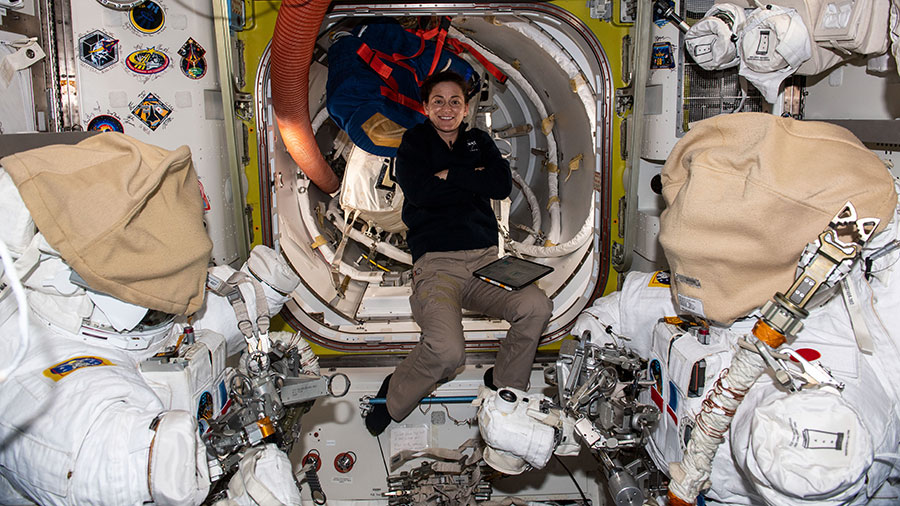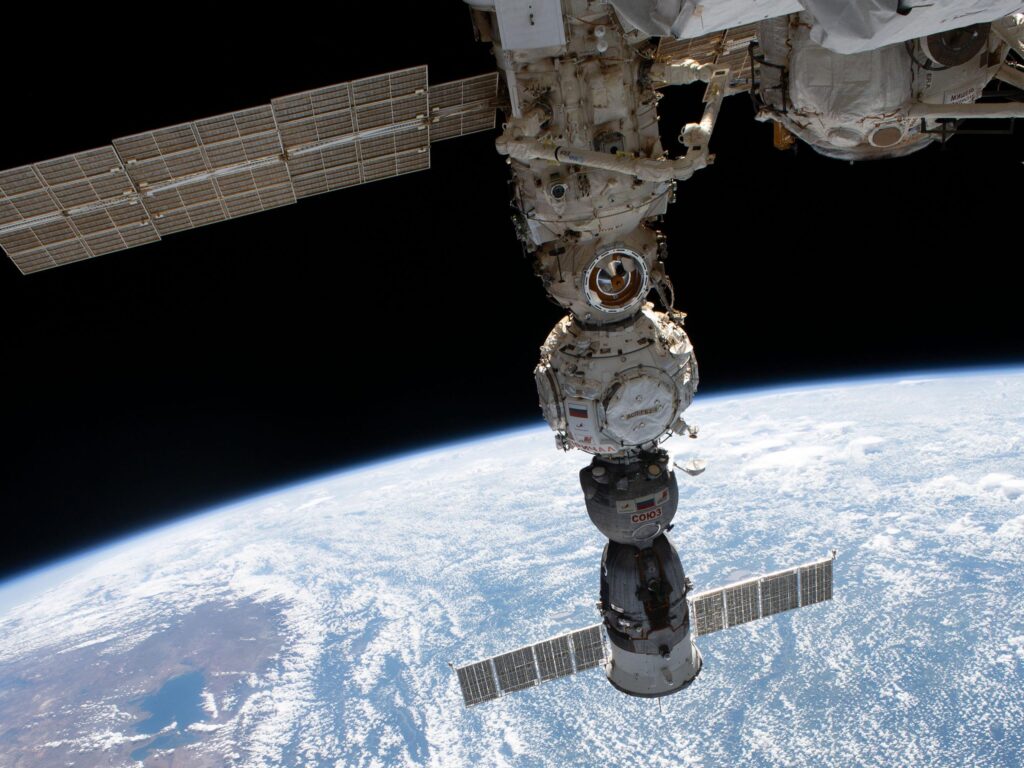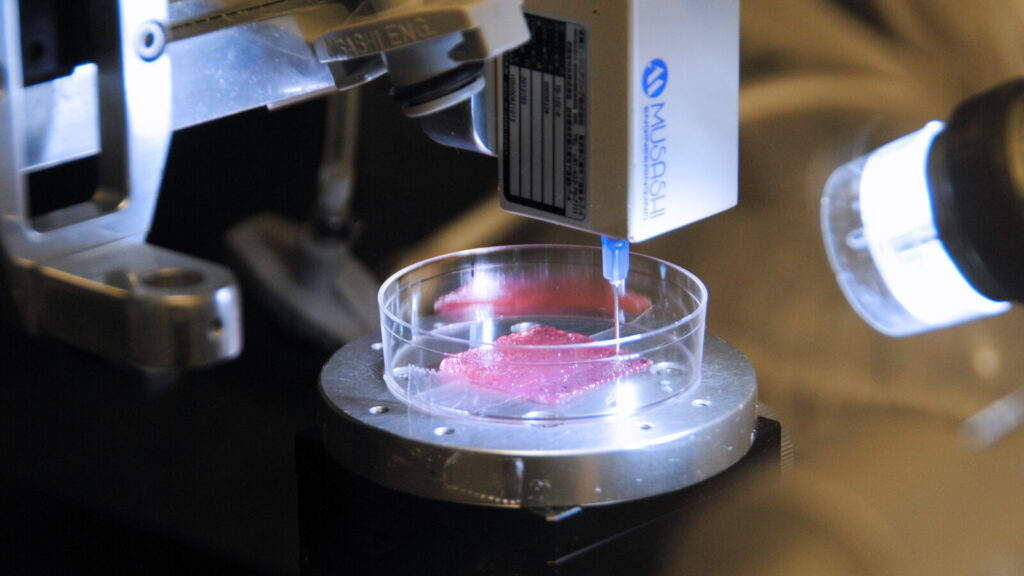
Two astronauts took the morning off on Friday following a spacewalk the day before while the rest of the Expedition 68 crew conducted the latest space experiments and lab maintenance tasks. Meanwhile, the International Space Station is orbiting higher today to get ready for a pair of spaceships arriving this month.
Flight Engineers Nicole Mann of NASA and Koichi Wakata of the Japan Aerospace Exploration Agency (JAXA) relaxed Friday morning after conducting a six-hour and 41-minute spacewalk on Thursday. The duo completed the installation of hardware on the station’s Starboard-4 truss readying the orbiting lab for its next roll-out solar array. The pair then went into the afternoon with standard post-spacewalk medical checks before cleaning up the Quest airlock where their spacewalking tools and Extravehicular Mobility Units (EMUs), or spacesuits, are stowed.
NASA astronauts Josh Cassada and Frank Rubio had their hands full on Friday as they explored how weightlessness affects a wide range of phenomena including biotechnology, agriculture, and physics. The ongoing microgravity studies provide scientists and engineers new insights that could promote state-of-the-art industries both in space and on Earth.
Cassada began his day configuring the BioFabrication Facility, a research device that will investigate the 3-D printing of organ-like tissues in microgravity, in the Columbus laboratory module. Afterward, he was back inside Columbus watering tomato plants growing inside the Veggie space botany facility. The Veg-05 study is studying a continuous fresh-food production system for space missions. Rubio set up the new Particle Vibration experiment inside the Destiny laboratory module’s Microgravity Science Glovebox. The physics study will investigate how particles organize themselves in fluids possibly advancing manufacturing techniques and providing new insights on astrophysics.
Commander Sergey Prokopyev assisted Flight Engineer Anna Kikina during her cardiac research early Friday as she attached sensors to herself to monitor her blood circulation in microgravity. Prokopyev then worked inside the Zvezda service module checking its systems. Kikina then spent her day inside Zvezda and the Nauka multipurpose laboratory module servicing their ventilation systems. Flight Engineer Dmitri Petelin spent all day Friday replacing air purification hardware before transferring filters from the ISS Progress 82 cargo craft to the Unity module.
The space station is orbiting higher, 260 miles above Earth at its highest point and 257.1 miles at its lowest, after the ISS Progress 81 resupply ship fired its engines for nearly fifteen minutes early Friday morning. The new orbiting altitude places the station at the correct altitude for the arrival of the new ISS Progress 83 cargo craft on Feb. 11 and the unpiloted Soyuz MS-23 crew ship on Feb. 21.
Learn more about station activities by following the space station blog, @space_station and @ISS_Research on Twitter, as well as the ISS Facebook and ISS Instagram accounts.
Get weekly video highlights at: https://roundupreads.jsc.nasa.gov/videupdate/
Get the latest from NASA delivered every week. Subscribe here: www.nasa.gov/subscribe




